One of the most common questions authors face is a deceptively difficult one to answer: “Where do you get your ideas?” Yet, the answers to that common question can be almost as interesting as the resulting story. Welcome to You’re My Inspiration, a new column dedicated to discovering what inspires a particular author and their work. Whether it be a lifelong love of mythical creatures, a fascinating bit of history, or a trip to a new and exciting place, You’re My Inspiration is all about those special and sometimes dark things that spark ideas and result in great stories.
This week, we bring you guest author Julie C. Day, whose novella, The Rampant, is now available from Aqueduct Press!
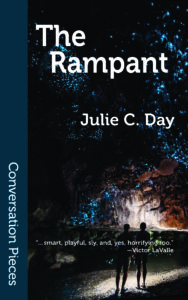
James Patrick Kelly, winner of the Hugo, Nebula and Locus awards, said,
“I loved the epic journey of our two teenaged queer heroes, Gillian and Emelia, through the sprawling horrors of the Sumerian afterworld. The clash of their modern feminist sensibilities with the cruel and rigid theocracy of the very oldest gods out-weirds much of the New Weird. In The Rampant, Julie Day calls us to visit a fantastical landscape in a voice that is hers alone.”
So where did that voice come from to craft such a story? Let Julie explain….
Welcome To My Macabre Food Web
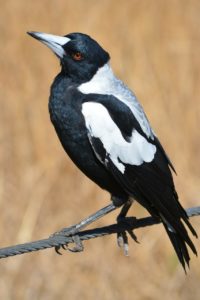
Magpie via Pixabay
So where do all good stories start? In my case it’s often that fingers-half-covering-eyes thrill of something macabre or erotic or strange playing out on my mental stage. If I’m lucky such a moment (or feeling) triggers one of my obsessive neural pathways and then, well, I’m off, racing down the rabbit hole.
Which is my roundabout way of saying that, for me, stories ignite when I start to research an obsession. Or two obsessions. Or three. Or eighteen. Because let’s be honest, my obsessions are both rife and short-lived. A few weeks, perhaps a few months, and my whirling dervish of a brain has moved on. For my novella The Rampant, after that initial creative glimpse — now lost in the memory-dust of time — my spiral of interest moved from the various cremation practices found around the world, the process of decomposition, and magpies, to the ancient beehive-shaped houses of Harran, Turkey and eventually to bioluminescent organisms and the various ways in which they could illuminate The Rampant’s physical underworld. For me obsession is a feedback loop central to forming the world and circumstances of any story. Obsessive feedback loops can lead to some incredibly interesting places. In fact, it’s that obsessive tangle of a process that led to my novella The Rampant.
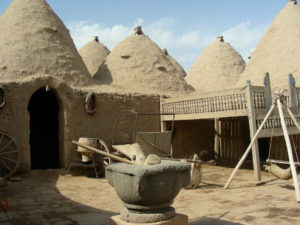
Beehive-shaped houses of Harran, Turkey via liakada-web, licensed under CC BY 2.0

The Goddess Ninhursag via Tore Kjeilen at LookLex
The book is both a second-coming story and a coming-of-age story. Set in Southern Indiana, it involves a stalled Sumerian Rapture and a journey to underworld by the story’s two protagonists, Gillian and Emelia. Multiple unique locations form the physical backbone of this underworld quest. It was that worldbuilding, in part, that forced me to spend so much time on the research portion of this story. It required numerous unique environments: a Sumerian-god-infested, small town in Southern Indiana; a caterpillar-filled path down to the land of the dead; the dank decay of the Plains, the section of the underworld reserved for the imperfect dead; and finally the Netherworld, the land reserved for the intact dead. It. Was. A lot. It was also so much fun!
As well as storytelling, I have a love of the biological science and a wonder of the physical world. Of course, I was caught by the idea of making sure the worlds The Rampant made biological sense.
And so the need to figure out how Gillian and Emelia could possible traverse the underworld led to a swirl of research. Green-glowing bioluminescent mushrooms created the necessary light on cave walls. The blue of dinoflagellates informed the Hubur River, the underworld tributary that connected the Plains of the imperfect dead and the Netherworld. And then there was the cave-enclosed field where corn borer caterpillars — living Hans-and-Gretel-style breadcrumbs for our heroes — were hatched. I wanted to make the field work. The caterpillars needed a food source and the cave needed its own biological lights. And so I included an ecological food web that was never fully explained in the book. Truth is, while I might need to make sure my imaginings make a sort of sense, the story doesn’t always require that same level of understanding….
- “The Last Stand” by Smoken Mirror is licensed under CC BY-NC 2.0
- Figure 1(A) shows the bioluminescence of Photorhabdus luminescens. It was taken with film 72 hours after the bacteria infected Galleria mellonella (waxworms).(Image courtesy Todd Ciche/California Institute of Technology),Figure 1(B) shows GFP-labeled Photorhabdus luminescens in the intestine of the Heterorhabditis bacteriophora nematode.(Image courtesy Todd Ciche,Department of Microbiology and Molecular Genetics, Michigan State University, East Lansing, MI 48824 USA)
And so, dear reader, I’ll share those details here — with you. Welcome to my food-web, light-source obsession. Down in the underworld flesh field where caterpillars are born and then begin their journey up to the surface, blue-glowing bacteria called Photorhabdus luminescens live inside parasitic worms called nematodes. These worms infect some of the field’s caterpillars, bringing along their bacterial hitchhikers. Once inside, the worm releases the glowing bacteria, which quickly kill the caterpillar, breaking it into a delicious-to-a-nematode soup. As the worm family expands inside the caterpillar carcass, the bacteria continue to grow their microscopic families into brightly colored dots of light. Until one day the caterpillar carcass ruptures and the worm family heads out in search of a new victim, bringing their glowing bacterial companions with them.
Yes, clearly obsession was involved in tracking down this particular symbiotic, parasitic interaction and placing it within one of The Rampant’s worlds.
For me it’s an essential process. Inspiration leads to information that then inspires further elements in the story. The inspiration that triggers a story is never one thing. Instead it’s a swirling mix of cause and effect that can never entirely be untangled.
 Julie C. Day’s dark fantasy novella The Rampant was released this September by Aqueduct Press. She is also the author of the collection Uncommon Miracles from PS Publishing. Her numerous stories can be found in places such as PodCastle, The Dark, and The Cincinnati Review. Wearing another, related hat, Julie is co-editor of the charity anthology Weird Dream Society due to be released May 5th, 2020. Proceeds from the anthology will go to RAICES.
Julie C. Day’s dark fantasy novella The Rampant was released this September by Aqueduct Press. She is also the author of the collection Uncommon Miracles from PS Publishing. Her numerous stories can be found in places such as PodCastle, The Dark, and The Cincinnati Review. Wearing another, related hat, Julie is co-editor of the charity anthology Weird Dream Society due to be released May 5th, 2020. Proceeds from the anthology will go to RAICES.
Julie lives in a small town in New England with her family and a menagerie of variously sized animals. She holds an MFA in Creative Writing from the University of Southern Maine’s Stonecoast program and a M.S. in Microbiology from the University of Massachusetts at Amherst.
You can find her at @thisjulieday or on her blog stillwingingit.com. Café writing and long baths with paper books are also a thing.
Photo by Laura Rodley
Want to talk about what inspired you as a writer, and/or your current release? Check out our guidelines and fill out the form here.

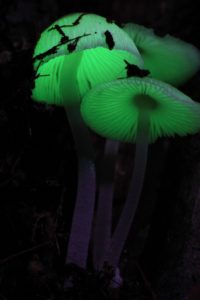
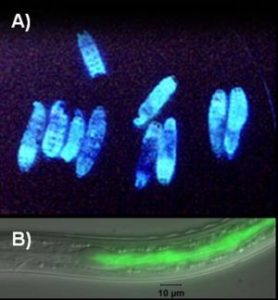
The Rampant sounds really interesting.
[…] Rampant. From Sumerian and Babylonian end-of-the-world myths to strange flora and fauna IRL, fall down the research rabbit hole with us to explore some of the fascinating things that figured in Day’s unique novella, now available […]